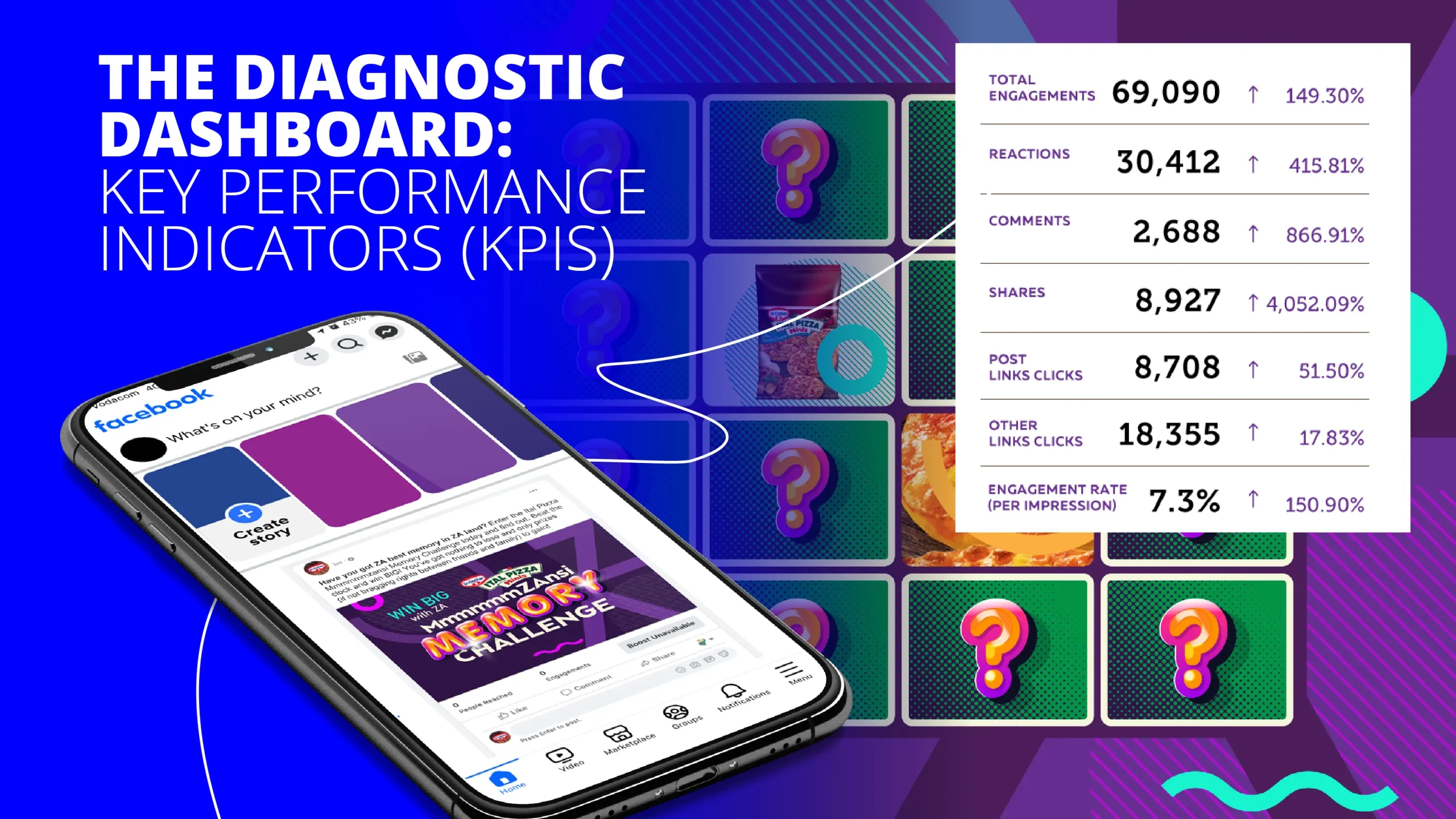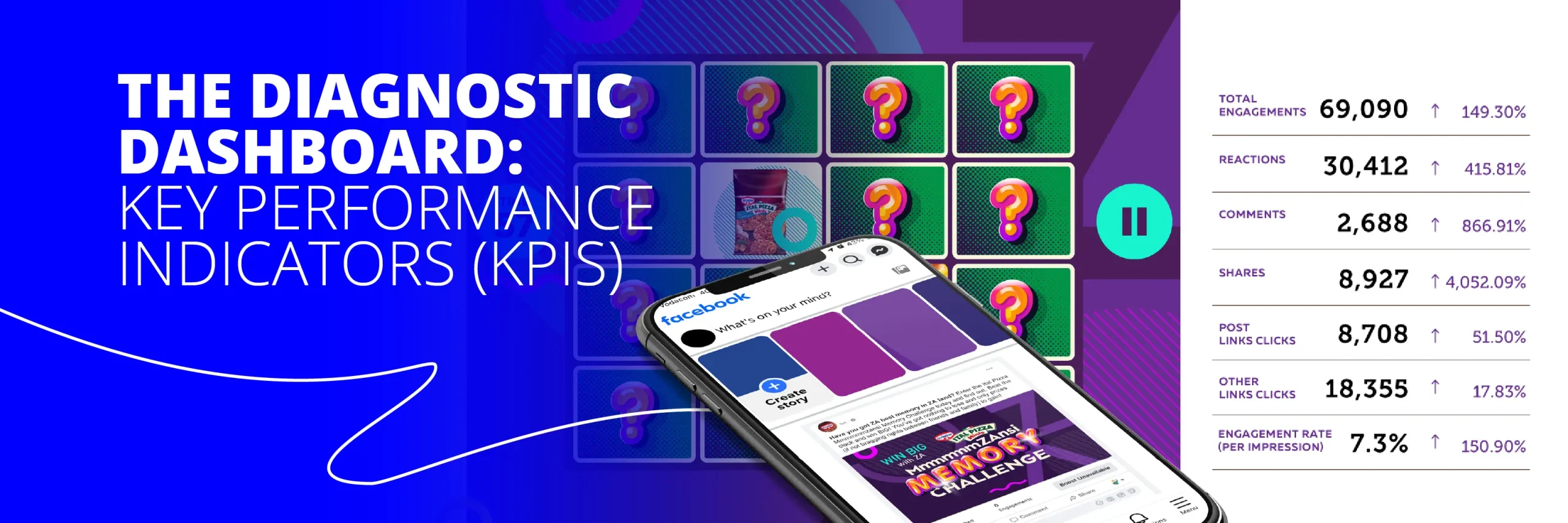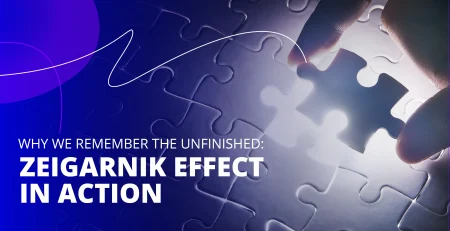The Ad Fatigue Epidemic: A Strategic Framework for Diagnosis, Prevention, and Revitalization in Modern Digital Advertising
The Ad Fatigue Epidemic
A Strategic Framework for Diagnosis, Prevention & Revitalization
Ad fatigue isn't just a metric: it's a psychological response to overexposure. When users see the same ad too often, their brains start to filter it out, leading to "banner blindness," declining performance, and even negative brand association. Here’s how to fight it.
Diagnosis: Identifying Ad Fatigue
Leading Indicators (Early Warnings)
- Rising Ad Frequency: The average user sees your ad more often.
- Declining Click-Through Rate (CTR): Engagement drops as interest wanes.
Lagging Indicators (Impact is Clear)
- Increasing Cost Per Acquisition (CPA): It costs more to get a customer.
- Decreasing Conversion Rates: Fewer users are taking the desired action.
Prevention: Proactive Strategies
Creative-Centric
- 🎨 Regularly update creative assets
- 🧪 Conduct rigorous A/B testing
- 🎞️ Diversify ad formats (video, image, carousel)
Audience-Centric
- 🚫 Implement effective frequency caps
- 🎯 Use advanced audience segmentation
- ✅ Exclude users who already converted
Channel-Centric
- ⏱️ Adapt to platform "clockspeed"
- 🎵 TikTok: Refresh creative weekly
- 👔 LinkedIn: Content has longer shelf life
Revitalization: Turn Fatigue into Fuel
When fatigue sets in, don't just pause. Pivot. Shift from a reactive response to a proactive system to maintain peak performance and protect brand equity.
Systematic Rotation: Keep ad concepts fresh and engaging.
Intelligent Automation: Use rules to automatically pause low-performing ads.
Ad Sequencing: Tell a story across multiple ad exposures.
Leverage AI: Use AI for dynamic creative and deep personalization.
The Cognitive Underpinnings of Ad Fatigue
Ad fatigue is not merely a marketing metric problem; it is a predictable response rooted in human psychology and neurology. When an audience is overexposed to the same advertisement, a cascade of cognitive processes is triggered, transforming a once-effective message into an unwelcome intrusion. Understanding this foundation is critical for any brand seeking to maintain campaign performance and protect its long-term equity. The failure to grasp these underlying mechanics leads directly to wasted budgets, decaying performance, and significant brand damage.
The Psychology of Overexposure: Why the Brain Tunes Out
The human brain is wired to filter out redundant information to conserve cognitive resources. This efficiency, while essential for daily life, is the primary driver of ad fatigue. The process unfolds through several distinct but interconnected psychological phenomena.
Habituation and Neural Response
From a neuro-scientific perspective, ad fatigue is the result of a habituated response in the brain. Key regions responsible for attention, emotion, and memory (such as the prefrontal cortex, amygdala, and hippocampus) become less responsive with repeated exposure to the same stimulus. This neural adaptation manifests as a lapse in attention, a reduction in emotional involvement, and impaired memory retention of the ad’s message. This phenomenon, often called “banner blindness” or selective attention, is a subconscious defense mechanism against cognitive overload, causing users to automatically ignore familiar patterns and content they deem redundant.
Emotional Depletion and Negative Association
Many advertisements are designed to evoke an emotional response, such as desire, empathy, or even fear. However, these emotional triggers are subject to a law of diminishing returns. Repeatedly exposing an audience to the same emotional cues leads to emotional depletion, where the intended feeling wears out and loses its impact. This effect is dangerously compounded when the advertising is perceived as intrusive or irrelevant. In such cases, emotional depletion curdles into active negative feelings, including frustration and annoyance. A critical and damaging process then occurs: the brain begins to associate these negative emotions not just with the ad, but with the brand itself. This creates a negative brand perception that can persist long after a campaign has ended, actively eroding brand equity and consumer goodwill.
Information Overload and Cognitive Filtering
The modern digital landscape is defined by unprecedented ad saturation. Consumers are exposed to thousands of commercial messages daily across a multitude of channels, creating an intense “attention economy” where focus is a scarce resource. To cope with this information overload, individuals develop sophisticated cognitive filters to cut out what they perceive as noise or intrusion.5 When an ad becomes overly repetitive, it is reclassified from potentially useful information to disruptive noise, triggering these filters and rendering it invisible to the user.
The Business Consequences of Inattention: A Cascade of Negative ROI
The cognitive and emotional responses to overexposure translate directly into tangible, negative business outcomes. The consequences of ad fatigue are not confined to a single metric but create a domino effect that undermines campaign profitability and brand health.
Direct Financial Impact
The most immediate and measurable consequence of ad fatigue is a decline in financial efficiency. As an audience becomes desensitized to an ad, each dollar spent on impressions delivers progressively less value, resulting in a wasted advertising budget and a diminishing Return on Ad Spend (ROAS). Platform algorithms are designed to maximize revenue; when user engagement with an ad drops, the platform may charge more for each click (Cost Per Click, or CPC) or acquisition (Cost Per Acquisition, or CPA) to maintain its revenue, further eroding the campaign’s profitability. This can lead to a scenario of diminishing returns, where increasing the budget on a fatigued campaign actively decreases the overall ROAS.
Performance Metric Decay
The financial decline is a direct result of decaying Key Performance Indicators (KPIs). The first metric to show signs of weakness is typically the Click-Through Rate (CTR), as a bored and annoyed audience simply stops clicking. This lack of engagement naturally leads to a drop in conversion rates, as fewer users are taking the desired action, such as making a purchase or filling out a form. This negative performance data is a signal to advertising platforms. Their algorithms may interpret the low engagement as a sign of poor ad quality or relevance, leading them to de-prioritize the ad and reduce its reach and impressions, even if the budget remains constant.
Long-Term Brand Damage
Perhaps the most insidious consequence of ad fatigue is the long-term damage to brand perception and loyalty. The negative sentiment generated by repetitive, intrusive advertising accumulates over time, functioning like a form of “brand debt.” While a campaign might deliver a positive ROAS in the short term, it could simultaneously be accruing this debt in the form of audience resentment. Consumers may begin to leave negative comments, actively block the brand’s ads, or develop a lasting negative opinion that makes them less receptive to future marketing efforts. This effect is particularly harmful among existing customers, for whom a barrage of repetitive marketing can damage their sense of loyalty and reduce the likelihood of repeat purchases. This accumulated negative equity represents a hidden, long-term cost that will require significant future investment to overcome.
A strategically critical distinction must also be made between “ad fatigue” and “audience fatigue.” While often used interchangeably, they represent different root causes that demand different solutions. Ad fatigue refers to the creative itself wearing out. Audience fatigue, on the other hand, occurs when the target audience pool is too small and becomes saturated. A marketer who misdiagnoses audience fatigue as simple ad fatigue might invest heavily in refreshing creative, only to find the new ads also burn out with alarming speed because they are being shown to the same exhausted audience segment. Correctly identifying the problem, whether it’s the message or the market, is the first step toward an effective solution.
A Diagnostic Framework for Identifying Ad Fatigue
To effectively manage ad fatigue, marketers must move beyond reactive responses to declining metrics and adopt a proactive, multi-layered diagnostic framework. This involves monitoring a dashboard of key indicators, employing advanced analytical techniques to uncover subtle trends, and understanding platform-specific warning signs. This approach enables the identification of fatigue in its nascent stages, before it severely impacts campaign budgets and brand perception.
The Diagnostic Dashboard: Key Performance Indicators (KPIs)
A well-structured dashboard should be organized to distinguish between leading indicators, which provide early warnings, and lagging indicators, which confirm a more advanced state of fatigue.
Leading Indicators (Early Warnings)
These metrics are the first to signal that an audience’s response is beginning to wane.
- Frequency: This measures the average number of times a unique user has seen an ad within a specific period. It is often the primary leading indicator of potential overexposure. While a frequency score between 3 and 5 is frequently cited as a red flag, this threshold is not universal and varies significantly by channel and objective. The most critical signal is not a static number but a dynamic trend: a rising frequency that is not accompanied by a corresponding improvement in performance metrics.
- Click-Through Rate (CTR): As the most direct measure of an ad’s ability to capture immediate interest, CTR is often the first performance metric to decline when fatigue sets in. A consistent, downward trend in CTR, especially while frequency is rising, is a classic and reliable early warning.
- Engagement Rate: On social media platforms, metrics such as likes, comments, shares, and video view rates are powerful indicators of an ad’s resonance. A noticeable dip in these interactions suggests the creative is losing its appeal and novelty.
Lagging Indicators (Confirmation of Fatigue)
These metrics typically shift after engagement has already begun to decline, confirming that the campaign’s efficiency and effectiveness are compromised.
- Cost per Acquisition (CPA) / Cost per Click (CPC): As users engage less with an ad, platform algorithms must work harder to achieve the desired action, leading to an increase in the cost of each acquisition or click. A rising CPA or CPC confirms that the campaign is losing efficiency.
- Conversion Rate: A falling conversion rate is a serious sign of fatigue. It indicates that even the users who are still clicking through are less motivated to complete the desired action, suggesting the ad’s persuasive power has eroded.
- Return on Ad Spend (ROAS): As the ultimate measure of profitability, a declining ROAS is the definitive lagging indicator that a campaign is no longer delivering value and is likely suffering from significant fatigue.
Qualitative Indicators
Beyond quantitative data, direct feedback from the audience provides an unambiguous signal of fatigue. A noticeable increase in negative comments (e.g., “I’ve seen this ad a dozen times”), a rise in users choosing to “hide ad,” or other forms of negative feedback are direct communications that the audience is overexposed and annoyed.
Table 1 provides a consolidated view of these diagnostic metrics, transforming a simple data list into an actionable decision-making tool.
| Metric | Category | Red Flag Threshold / Signal | Strategic Implication |
|---|---|---|---|
| Frequency | Leading | Rises above 3–5 (platform dependent) with stagnant performance | Potential overexposure. Monitor other leading indicators closely. |
| Click-Through Rate (CTR) | Leading | Drops by 15–20% from its peak over a 7-day period | Creative burnout is likely. Prepare for creative rotation or A/B testing. |
| Engagement Rate | Leading | Steady decline in likes, shares, comments, or view rates | Ad is losing social relevance. Consider a new format or messaging angle. |
| Cost per Acquisition/Click (CPA/CPC) | Lagging | Steady increase over time without a change in targeting | Campaign efficiency is lost. Immediate intervention is required. |
| Conversion Rate | Lagging | Declining trend despite stable or increasing CTR | Message-to-landing-page alignment may be weak, or user intent is low. |
| Return on Ad Spend (ROAS) | Lagging | Consistent decline below profitability targets | Campaign is no longer effective. Pause or conduct a major overhaul. |
| Negative Comments/Hides | Qualitative | Noticeable increase in negative sentiment or “hide ad” actions | Audience is actively rejecting the ad. Immediate creative refresh is needed. |
| Impression Share (Google Ads) | Leading | Rises above 70% | Audience saturation is likely. Expand targeting or explore new channels. |
| Saturation Curve Inflection | Advanced | Curve of spend vs. conversions flattens significantly | Point of diminishing returns reached. Cap spend or refresh creative. |
| Blended ROAS Decline | Advanced | Drop in Day 0 revenue from new users across all channels | Collective creative library is becoming stale, affecting acquisition quality. |
Advanced Diagnostic Techniques: Beyond the Dashboard
Relying solely on average metrics can mask the early onset of fatigue. More sophisticated analytical techniques provide a deeper, more predictive understanding of campaign health.
- Saturation Curve Analysis: This powerful visualization tool involves plotting cumulative ad spend or impressions on the x-axis against the number of conversions on the y-axis. Initially, the curve will rise steeply as the campaign efficiently acquires new customers. The point at which the curve begins to flatten, the “inflection point,” signals that incremental spend is yielding significantly fewer conversions. This point marks the onset of audience saturation and creative fatigue, providing a clear, data-driven signal to refresh creative or cap spending.
- Frequency Distribution & CTR-by-Frequency Analysis: Instead of relying on the average frequency, a more granular analysis examines the frequency distribution—how many users saw the ad once, twice, three times, and so on. This can be paired with a CTR-by-frequency analysis, which plots how the click-through rate changes at each level of exposure. This method can pinpoint the exact frequency threshold where engagement begins to drop off for a specific creative and audience, allowing for the precise setting of frequency caps. This shifts the goal from adhering to a generic “optimal frequency” to identifying the unique “fatigue threshold” for each specific campaign context.
- Blended & Cohort-Based Metrics: A decline in performance can be subtle. Monitoring high-level, blended metrics such as the overall Day 0 ROAS from new users or the total number of new subscribers per 1,000 paid impressions can reveal a collective decline in creative effectiveness across all channels. Thus, a drop in user quality often precedes a drop in conversion volume. By tracking post-conversion behavior for different cohorts of users, such as app onboarding completion rates, marketers can detect if a fatigued ad is beginning to attract lower-intent users who are more likely to churn. This is a critical leading indicator that the ad’s persuasive power has eroded, and a decline in top-line conversions is imminent.
Platform-Specific Diagnostic Signals
Major advertising platforms provide their own unique tools and signals to help diagnose fatigue.
- Meta (Facebook/Instagram): The Meta Ads Manager offers explicit warnings within the “Delivery” column of a campaign. A “Creative Limited” status indicates the cost per result is rising, while a “Creative Fatigue” status is triggered when the cost per result is more than double that of past ads, signaling a severe performance drop.
- TikTok: Given its high content velocity, TikTok provides a “Fatigue Index” that monitors daily changes in CPA and reach. A rising index value, particularly one that crosses a threshold of 0.6, is a clear signal that the creative’s effectiveness is waning and it is failing to reach new users efficiently.
- Google Ads: While Google’s platform is less explicit, a key metric to monitor for Display and Video campaigns is Impression Share. An impression share exceeding 70% indicates that the campaign is dominating its available audience, potentially leading to saturation and diminishing returns with each incremental dollar spent.
Multi-Pronged Approach
Effectively combating ad fatigue requires a holistic and integrated strategy that addresses three core pillars: the Creative itself, the Audience it reaches, and the Channel on which it is delivered. Treating these as isolated tactics is a common mistake; true resilience against fatigue comes from managing them as an interdependent system where a change in one lever necessitates adjustments in the others.
The Creative-Centric Approach: The Engine of Novelty
The most direct method for fighting fatigue is to introduce novelty through the ad creative. This must be a disciplined, strategic process rather than a reactive, ad-hoc one.
- Strategic Creative Rotation & Refreshment: A structured schedule for updating creative assets is paramount. This can involve minor monthly updates, such as tweaking ad copy, adjusting the color palette, or changing a call-to-action (CTA), and more significant quarterly overhauls that introduce entirely new concepts or formats. Even subtle changes, like reversing an image or altering the background, have been shown to reinvigorate ad performance by disrupting the pattern recognition that leads to banner blindness.
- A/B Testing Framework: Continuous and rigorous A/B testing is the mechanism for discovering which creative elements resonate most strongly and for building a library of high-performing assets. Best practices for A/B testing include isolating a single variable at a time (e.g., headline vs. headline) for clear, unambiguous results, defining a clear hypothesis and success metric (e.g., “Will a question-based headline increase CTR by 10%?”), and ensuring the test runs long enough with a sufficient budget to achieve statistical significance.
- The Hierarchy of Creative Fatigue: Not all components of an ad wear out at the same rate. The “hook,” the first three seconds of a video or the headline of a static advert, is exposed to the audience most frequently and therefore fatigues the fastest. This element requires the most regular rotation. Visuals (images, video style) are the next to fatigue, while core value propositions and CTAs tend to have a longer lifespan. Understanding this hierarchy allows for more efficient creative refreshes that focus resources on the highest-impact elements. A more profound strategy moves beyond simply refreshing the ad to refreshing the angle. Instead of showing a new image to communicate the same value proposition, a superior approach tests a fundamentally new reason for the consumer to engage, effectively resetting the fatigue clock at a conceptual level.
- Diversifying Ad Formats: Over-reliance on a single ad format, such as static images, is a direct path to monotony and fatigue. A robust strategy employs a diverse mix of formats to keep the user experience varied. This includes static images, multi-panel carousel ads, short-form and long-form video, interactive formats like polls and quizzes, and authentic user-generated content (UGC).
The Audience-Centric Approach: Reaching the Right People, the Right Number of Times
Even the best creative will fail if it is shown to the wrong audience or to the right audience too many times.
- Effective Frequency Capping: This is a fundamental technical control for preventing overexposure. By setting a limit on the number of times a unique user can see an ad within a given period, marketers can directly mitigate a primary cause of fatigue. The appropriate cap is not universal; it depends heavily on the campaign objective. Brand awareness campaigns, for example, can tolerate a higher frequency than direct-response conversion campaigns, which risk becoming annoying much faster.
- Advanced Audience Segmentation & Expansion: Targeting a narrow, static audience is one of the most common causes of rapid fatigue. A multi-faceted audience strategy is essential:
- Expansion: When an audience shows signs of saturation, it is crucial to expand the pool of potential customers. This can be achieved by broadening targeting criteria (e.g., expanding age ranges or adding adjacent interests) or by leveraging platform tools to build lookalike audiences based on the characteristics of existing high-value customers.
- Segmentation: Rather than delivering a one-size-fits-all message, the audience should be divided into distinct segments based on demographics, online behaviors, or their stage in the customer journey. Delivering tailored creative to each segment makes repeated brand exposures feel more relevant and personalized, thereby slowing the onset of fatigue.
- Exclusion: A critical and often overlooked tactic is the active exclusion of certain users. This includes individuals who have already converted (to avoid annoying new customers) and segments that have been exposed to the ad beyond its fatigue threshold without engaging. This practice stops wasting ad spend on users who are either no longer relevant or have become completely desensitized to the message.
The Channel-Centric Approach: Adapting to Platform Velocity
A one-size-fits-all creative strategy is destined to fail because the rate of creative burnout varies dramatically from one advertising platform to another. An effective strategy must be calibrated to the unique “clockspeed” of each channel. A failure to align the Creative, Audience, and Channel levers results in systemic failure. For instance, deploying a single, high-production-value creative to a narrow audience on a high-velocity channel like TikTok will lead to near-instantaneous burnout. The same strategy might be highly effective on a slower-velocity channel like LinkedIn. Success lies in balancing the entire system.
Table 2 provides a strategic guide to the different cadences required by major advertising platforms.
| Platform | Typical Creative Lifespan | Recommended Refresh Cadence | Optimal Weekly Frequency Cap (Guideline) | Key Strategic Imperative |
|---|---|---|---|---|
| TikTok | 5–10 days | Weekly or more frequently | 3–5 | High-Volume, Rapid Iteration: Requires a constant stream of new, native-feeling creative to keep up with rapid content turnover. |
| Meta (Facebook/Instagram) | 2–4 weeks | Bi-weekly | 5–8 (Consideration) | Consistent Testing & Rotation: Demands a disciplined schedule of A/B testing and creative refreshes to maintain performance in a competitive feed. |
| YouTube | 3–4 weeks | Monthly | 6–10 | Narrative & Format Diversity: Leverage different video lengths and formats (e.g., skippable in-stream, non-skippable) and consider ad sequencing. |
| Google Display | 2–3 months | Quarterly | 12–20+ | Audience Segmentation & Exclusion: Relies heavily on smart targeting, retargeting, and excluding fatigued segments to maintain relevance across a broad network. |
| 2–3+ months | Quarterly or as needed | 6–10 (B2B Nurture) | Value-Driven, Narrative-Based: Content has a longer shelf life; focus on high-value, educational assets and rotate messaging angles for niche audiences. |
Advanced Strategies and the Future of Fatigue Management
Beyond the foundational pillars of creative, audience, and channel management, a new frontier of sophisticated strategies is emerging. These approaches, centered on narrative advertising and artificial intelligence, promise to transform the reactive fight against fatigue into a proactive system of sustained, personalized engagement.
Ad Sequencing: Turning Repetition into Narrative
Ad sequencing offers a powerful solution to the core problem of repetition by fundamentally reframing it. Instead of showing the same ad multiple times, this strategy presents a series of different, interconnected ads in a predetermined order, creating an evolving narrative that guides the user through a journey. This approach fundamentally rewires the psychology of repetition. While standard repetition triggers habituation and annoyance, sequencing leverages the “Mere Exposure Effect,” whereby familiarity can breed preference, while simultaneously introducing novelty at each step. This combination of a familiar brand with a new message keeps the brain engaged, prevents habituation, and taps into the powerful cognitive framework of storytelling to make the campaign more memorable and persuasive.
A typical sequence is structured to align with the marketing funnel 42:
- Ad 1 (Awareness): The first ad introduces the brand or a problem, designed to capture attention and spark curiosity without a hard sell.
- Ad 2 (Consideration): For users who engaged with the first ad, the second ad provides more detail, highlighting benefits, showcasing social proof like testimonials, or educating the user about the solution.
- Ad 3 (Decision): The final ad in the sequence delivers a strong call-to-action, often paired with an incentive like a limited-time offer or a free trial, to create urgency and drive conversion.
This method nurtures the user relationship, building trust and maintaining interest in a way that simple repetition cannot. Successful implementation requires advertising platforms that support interaction-based audience targeting, enabling marketers to serve the next ad in the sequence only to those who have seen the previous one.
The Role of Programmatic and Generative AI: The New Frontier
Automation and artificial intelligence are set to revolutionize fatigue management, offering tools to scale personalization and creative production far beyond manual capabilities.
Programmatic Solutions
Programmatic advertising platforms provide several automated tools to combat fatigue:
- Dynamic Creative Optimization (DCO): DCO is a technology that automates the assembly of ads in real-time. It draws from a library of creative components (e.g., different headlines, images, CTAs, backgrounds) and combines them into a personalized ad based on user data, context, or past behavior. This ensures that each user sees the most relevant and persuasive version of the ad, enabling hyper-personalization at scale and dramatically reducing the feeling of repetition.
- Automated Frequency Management: Sophisticated programmatic platforms can implement frequency caps not just within a single campaign or channel, but across a user’s entire digital journey. By monitoring a user’s total exposure to a brand’s ads across multiple websites, apps, and platforms, these systems can prevent over-saturation and optimize the delivery of messages across the entire media plan.
Generative AI (GenAI): A Paradigm Shift
Generative AI represents a monumental leap forward in the fight against ad fatigue.
- Solving the Creative Bottleneck: The primary constraint in creative rotation has always been the time and resources required to produce new assets. GenAI effectively eliminates this bottleneck by enabling the creation of countless high-quality ad variations, including text, images, and even video, in a matter of seconds. This allows for a state of continuous creative refreshment and facilitates A/B testing on an unprecedented scale, ensuring that campaigns never grow stale.
- Hyper-Personalization and Contextual Relevance: The future of advertising lies in moving beyond historical behavioral tracking toward real-time contextual relevance. GenAI can analyze a user’s immediate intent, such as the topic of a chatbot conversation or the content of an article they are reading, and generate a perfectly tailored, native-feeling ad on the fly. This shifts the advertising paradigm from being an interruption based on past behavior to a valuable service aligned with current intent.
This technological advancement, however, presents a paradox. While GenAI offers the potential to create a world where every ad impression is a unique, personalized creative, thereby eliminating fatigue, it also carries the risk of exacerbating the problem. If this immense power is used simply to increase the sheer volume of advertising, it could lead to an even more extreme form of “channel fatigue.” The human brain’s capacity for attention is finite. An overwhelming flood of hyper-personalized noise could be even more fatiguing than simple repetition. Therefore, the winning strategy will not be to use AI to create more ads, but to create more relevant and valuable ads that function as a helpful service rather than an intrusive message.
Industry-Specific Playbooks for Trace Brand Building
The principles of ad fatigue diagnosis and management are universal, but their application must be tailored to the specific challenges and opportunities of different industries. For Trace Brand Building, translating these global frameworks into actionable playbooks for its key client verticals, CPG & Food, Healthcare, and B2B, is essential for driving client success. The following table provides a high-level strategic summary, followed by detailed playbooks for each vertical.
| Client Vertical | Primary Fatigue Challenge | Top Creative Strategy | Top Audience Strategy | Optimal Channel Approach |
|---|---|---|---|---|
| CPG & Food | Creative Burnout | High-Cadence Rotation & UGC | Broad Audience, Seasonal Segmentation | High-Velocity Social (TikTok, Meta) |
| Healthcare | Trust Erosion | Educational Sequencing | Journey-Stage Segmentation | Mix of Search & Professional Social |
| B2B | Audience Saturation | ABM Templates & Value Prop Testing | Niche Targeting & Exclusion | Low-Velocity Professional (LinkedIn) |
CPG & Food Brands: Winning in a High-Frequency World
Challenge: Consumer Packaged Goods (CPG) and food brands operate in highly competitive, often impulse-driven markets. They typically target broad audiences and require a constant brand presence, making them highly susceptible to rapid creative burnout due to high media spend and short consumer attention spans.
Strategic Playbook:
- High-Cadence Creative Rotation: The fast-paced nature of this vertical demands a rapid refresh schedule. Creative assets should be updated every 2-4 weeks, aligning with seasonal trends, holidays, promotional calendars, and cultural moments to maintain relevance and novelty.
- Leverage UGC and Influencer Content: To combat the polished, corporate feel that can accelerate fatigue, incorporate authentic user-generated content (UGC) and influencer collaborations. This content feels more native to social feeds, builds trust, and provides a cost-effective stream of fresh visuals.
- Diversify Formats: Maintain audience interest by employing a rich mix of ad formats. Short-form videos (e.g., recipes, “how-to” guides), interactive polls (e.g., “Which flavor is your favorite?”), and carousel ads that showcase a product range or tell a story are highly effective.
- Focus on Emotional Connection: CPG advertising that successfully evokes strong, positive emotions like joy, humor, and surprise is significantly more memorable and resistant to fatigue. These ads create a positive brand association that endures beyond a single viewing.1
Healthcare Brands: Building Trust Without Causing Annoyance
Challenge: Healthcare marketing involves longer consumer consideration cycles, the need to build immense trust, and navigating strict platform advertising policies. Ad fatigue in this sector is particularly damaging, as annoyance can quickly undermine the credibility and authority essential for a healthcare brand.
Strategic Playbook:
- Educational Ad Sequencing: A narrative, sequential advertising approach is ideal for guiding potential patients through a complex decision-making process. The sequence should begin with content that builds awareness of a condition or problem, progress to educational materials about solutions and treatments, and conclude with trust-building assets like patient testimonials or a clear call-to-action for a consultation.
- Prioritize Value Over Volume: Instead of high-frequency brand messaging, focus on delivering high-value content at a lower frequency. Assets like downloadable whitepapers, expert-led webinars, or detailed guides position the brand as a trusted resource rather than a repetitive advertiser.
- Refined Audience Segmentation: Target users based on their specific stage in the healthcare journey. It is crucial to avoid showing early-stage, problem-awareness ads to users who are already researching specific providers or treatments. Use exclusion lists to ensure messaging remains relevant to each user’s context.
- Maintain Brand Consistency and a Professional Tone: While creative elements should be refreshed to avoid visual stagnation, the core brand identity, tone of voice, and messaging must remain consistent and authoritative. This stability is fundamental to building and maintaining patient trust.
B2B Brands: Engaging Niche Audiences Effectively
Challenge: Business-to-Business (B2B) campaigns often target small, well-defined audiences (e.g., specific job titles at a list of target companies). This makes them extremely susceptible to audience saturation, where the entire target list is quickly overexposed to the same message. Long sales cycles further complicate this, requiring sustained engagement without causing burnout.
Strategic Playbook:
- Account-Based Marketing (ABM) Creative Templates: To achieve personalization at scale, develop a system of creative templates. These templates maintain brand consistency while allowing for key elements to be dynamically personalized for each target account or industry segment. Variables can include the company’s name, logo, industry-specific imagery, or messaging that addresses a role-specific pain point.
- Rotate Value Propositions, Not Just Visuals: For a niche audience that is already aware of the brand, simply changing an image is insufficient. A more effective strategy is to test and rotate the core messaging angle. If an ad focused on “increasing efficiency” begins to fatigue, pivot the campaign to a new value proposition, such as “reducing risk” or “driving innovation”.
- Channel-Specific Strategy: B2B campaigns should lean into slower-velocity platforms like LinkedIn, where professional and educational content has a much longer shelf life and is perceived as less intrusive. Use sophisticated retargeting to serve a sequence of different assets, such as a case study followed by a whitepaper, and then a webinar invitation, based on a prospect’s prior engagement.
- Strategic Frequency: While constant bombardment is counterproductive, a higher frequency can be effective during a short, critical window in the B2B sales cycle. For a retargeting campaign aimed at prospects who have recently shown high intent (e.g., requested a demo), a frequency of 15-20 impressions over 30 days can keep the brand top-of-mind. However, this must be a time-boxed effort, followed by a cool-down period to prevent long-term audience fatigue.
Conclusion: From Reactive Response to Strategic Advantage
Ad fatigue represents one of the most pervasive yet preventable drains on marketing performance and brand equity. As we’ve explored throughout this guide, the challenge extends far beyond declining CTRs or rising CPAs. At its core, ad fatigue is a systematic breakdown in the relationship between brand and audience; one that accumulates hidden costs in the form of negative brand perception, lost customer loyalty, and diminished future marketing effectiveness.
The path forward requires abandoning reactive, piecemeal approaches in favor of an integrated, strategic framework. Success comes from understanding that creative, audience, and channel strategies must work as an interdependent system. A brilliant creative will fail if shown to a saturated audience. Perfect targeting means nothing if the creative has grown stale. Even the best combination of creative and audience will underperform if misaligned with platform dynamics.
Three critical shifts will define winners in the battle against ad fatigue:
First, prevention over cure. Leading brands will implement diagnostic dashboards and early warning systems that catch fatigue in its nascent stages, long before it impacts bottom-line metrics. They’ll move from asking “How do we fix this fatigued campaign?” to “How do we build campaigns that resist fatigue from the start?”
Second, systematic rotation over random refreshment. The most successful marketers will establish disciplined creative rotation schedules, structured A/B testing frameworks, and clear refresh hierarchies. They’ll understand that different creative elements fatigue at different rates and allocate resources accordingly. More profoundly, they’ll refresh not just the creative but the underlying value proposition and messaging angle.
Third, intelligent automation over volume escalation. As AI and programmatic capabilities expand, the temptation will be to flood channels with more ads. Winners will resist this urge, instead using technology to create more relevant, valuable experiences. They’ll leverage DCO (Dynamic Creative Optimization) for genuine personalization, not just variation.
The stakes have never been higher. In an attention economy where consumers face unprecedented ad exposure, the penalty for poor fatigue management extends beyond campaign metrics. Brands that fail to respect audience attention risk permanent damage to their market position. Conversely, brands that master fatigue management transform a universal challenge into competitive advantage; maintaining peak campaign performance while competitors struggle with declining returns.
At Trace Brand Building, we’ve witnessed firsthand how strategic fatigue management transforms marketing outcomes. Our MAGIC formula doesn’t just address creative burnout or audience saturation in isolation—it aligns every element of your marketing ecosystem to maintain peak performance over time. We blend data-driven diagnostics with imaginative storytelling to create campaigns that capture attention without exhausting it.
The brands that will dominate their categories understand a fundamental truth: sustainable marketing success isn’t about winning the loudness war. It’s about orchestrating a sophisticated balance between novelty and consistency, reach and relevance, frequency and respect. They recognize that every ad impression either builds or erodes brand equity, and they manage their campaigns accordingly.
Your audience’s attention is a finite resource. The question isn’t whether your campaigns will experience fatigue; it’s whether you’ll have the strategic framework and operational discipline to prevent, diagnose, and combat it effectively. The comprehensive strategies outlined in this guide provide that framework. Now, the execution rests in your hands.
Ready to transform your approach to campaign management? Book the MAGIC Audit or schedule a 20-minute eligibility check to discover how we can help you break the ad fatigue cycle and build campaigns that maintain peak performance quarter after quarter.











